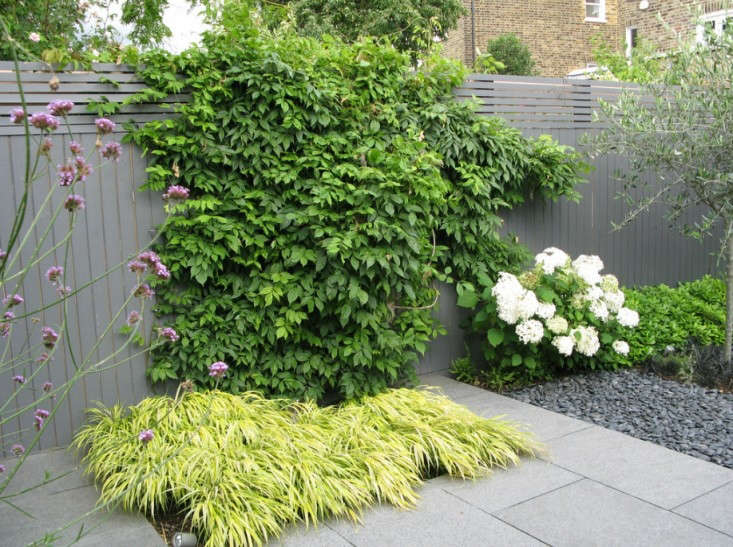Hakone Grass, Hakonechloa: “Japanese Forest Grass”
Think of it as Cousin Itt style for the garden. Low-growing clumps of Hakonechloa macra grass add floppy, shaggy style to a landscape.
Native to Japan’s Mount Hakone, hakone grass is happiest in rich, moist soil and part shade and is a good choice if you need a well-behaved ground cover, a low border, erosion control on a hillside, or a plant to spill over the side of a container.
Is hakone grass the right plant for your garden? Read on to find out.

‘Aureola’, with variegated foliage and slender, long leaves, reflects light and can brighten a dark spot or focus attention on a quiet corner of the garden.

Delicate leaves spill out of the center of a clump of hakone grass, which typically grows to heights of 16 to 26 inches.
Cheat Sheet
- Not all hakone grass cultivars have chartreuse foliage: ‘Beni-Kaze’ (which means “red wind”) has green foliage that turns a purply red in autumn; ‘Nicolas’ has solid green leaves that turn to a fiery orange in fall, and ‘Albo-Striata’ is a variegated variety with white stripes.
- With long, thin leaves that bring to mind the foliage of bamboo, hakone grass is a good choice for use in a Japanese-style garden.
- Like most grasses, Hakonechloa ripples like waves in a breeze, adding motion and life to a garden.

Keep It Alive
- Hakone grass thrives as a perennial in USDA growing zones 5 to 9.
- Deer-resistant and low-maintenance, hakone grass will require little beyond an evenly moist environment and well-drained soil.
- Divide and transplant clumps in spring.

Hakone grass dies back in late winter. See more at Gardening 101: How to Care for Perennial Grasses.
Read more growing tips in Hakone Grass: A Field Guide to Planting, Care & Design and browse our curated design guides to Perennial Grasses 101, including Miscanthus, Bamboo, Fescue, and Sedges. Also:
- See how to use hakone grass in a landscape in Designer Visit: A Garden Inspired by Japan, in Westchester County, New York.
- Expert Advice: 8 Tips for a Meadow Garden from Grass Guru John Greenlee









Have a Question or Comment About This Post?
Join the conversation